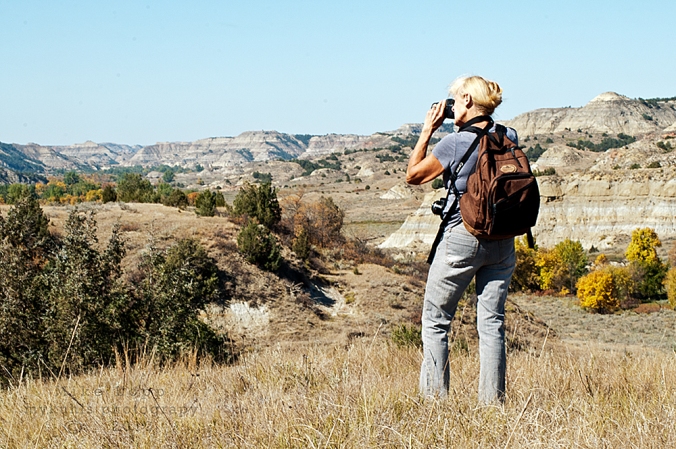
Your camera — never leave home without it. It’s easier than you may think to get your stellar images of the North Dakota Badlands
Want pretty pictures of the Badlands? Go buy a post card.
Want to capture your own one-of-a-kind keepsake memory of the Badlands? Go get it. It’s easier than you think – if you are willing to slow down, get out of your car and look for it.

Just about suppertime, from any high point, venus’ belt makes a good backdrop for your landscape photo.
There are thousands of square miles of unsullied beauty in the Badlands of North Dakota. In those endless horizons are millions of your own scenes to capture, frame and display back home. Here’s how in five easy tips: Timing, Temperament, Tools, Tenacity, and Technique.
Timing – it’s all about light. North Dakota is blessed with clean clear air. Smog? Nope. Hazy humidity? Gone. You’ve got unfettered access to the sun, almost. You’re still 95,000,000 miles from it, but that’s close enough to get the shots you will want to display.
Avoid mid-day when the sun is high and bright. As you know, the Badlands are endless contours of bluffs, buttes, slopes, hills, canyons and valleys. It takes shadows to show them and those shadows are strongest early in the morning or late in the day.

Contrasts and contours are hidden most of the day. Once the sun begins to lower the shadows present a great view of the bluffs and buttes.
Shooting at the ends of the day means you also get the advantage of the Golden Hour when the solar Rapunzel lets down her golden locks and the landscape takes on a golden or yellow cast. Generally, that’s the first hour and the last hour of daylight. Depending on where you are in the Badlands, you could be out at sunrise which is about 5:45 a.m. in June, or out at sunset which is about 9:45 p.m.
And if you like to take sunset photos – turn around. Put your back to the sun and shoot Venus’ Belt as it appears in the east at sunset.
Tip: Late-day landscapes are better than noon-day landscapes
Temperament – take it easy, but keep moving. If you want to jump out of your car, run to the edge of an overlook and shoot the scene, you are better off performing that activity at a gas station where you can run in and buy a postcard. Sadly that’s what many people do, drive through one of the Theodore Roosevelt National Parks, pull over to the side of the road, snap a shot and head home.
Park your car, (you don’t want it to roll away down a bluff or butte) and walk. If you’re stopped at a ridge or hilltop, you’ll have a relatively easy time finding a vantage point. If you are down below, be prepared to hike. You don’t have to hike to the tallest point, but the higher up you go, the more you will see. The trails that have been cut in the parks, or the Maah Daah Hey trail make it easy to walk to the top. You can make your own trail as long as you are on public land. Make a zig-zag “Z” pattern of switchbacks up the hill, stopping at each point on the repeated “Z” pattern. It’s encouraging to see how far you’ve climbed and at each point, you get a new view.
Tip: Don’t get in a hurry.

Don’t get in a hurry. Take time to look — and feel. You’ll feel the shot more than you see the shot.
Absorb – that’s the key activity. Absorb and feel what you see. It takes a quiet and still temperament to absorb what you are about to see. It’s in that moment of absorption that you can see the details, the shading, the colors the contrasts that will give you the image you want to capture.
Tools – we’re not talking camera gear here. An expensive camera doesn’t take any better photos than an expensive computer writes a better document. The tools we’re talking about here are an accurate weather report and a good map. If you have a GPS system on your phone, that can be handy, but a paper map is preferred. All of western North Dakota is covered by the US Forest Service maps. The maps are matchless for showing you what you need to know:
- Public groomed trails such as the Maah Daah Hey or other marked trails.
- Gravel roads and two-track trails to show you where to get off the highways.
- Points of Interest – historical, geographical and topographical.
- Topography – the closer the lines, the more steep the terrain.
- Water – most of which is not drinkable.
The U.S. Forest Service Maps are updated regularly. You can get the latest map from the visitor centers at the Theodore Roosevelt Parks, or at the US Forest Service Office in Bismarck, Watford City or Dickinson. They cost about $13. They’re worth it!
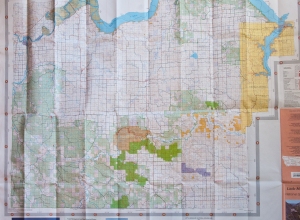
The U.S. Forest Service map costs about $13 and is the most valuable tool (other than your camera) that you can buy.
A GPS on your phone will give you the precise location at any moment. With that information, you can coordinate on the Forest Service map to see not only where you are, but where you are going.
A critical element is a weather forecast. North Dakota’s weather is notorious for frequent and sudden changes. It lies in the middle of the continent and several different weather systems from different direction influence conditions. So, one thing you can do is monitor trends before you set out on your photo safari. About three to five days before your photo safari, look up the weather forecast for where you expect to go.
Forecasts are updated several times a day, so check twice a day, such as 7 a.m. and 9 p.m. every day. Notice the changes or trends in the anticipated temperatures, rain chances or cloud cover. That practice will give you more of a motion picture sense of what to expect. Checking just once as you head out the door will give you only a snapshot of what to expect. It’s better to see the weather pattern than the weather snapshot.
Beyond those specific tools, good shoes and proper clothing will allow you to not only get to the place where you can get a good shot, but will also provide you the comfort you need to be patient. Warm enough when temps are cool, protective enough when mosquitoes are out. Discomfort will prompt you to hurry your exploration for a shot, so get comfortable.
Tip: Prepare yourself with comfort and knowledge.
Tenacity – don’t stop, don’t give up. The shot you’re looking for is over the next hill. Drive, walk or ride over the next hill and you’ll see something new. If it’s not as spectacular as that scene two hills back, turn around and go back. Or shoot as you go, it keeps getting better and when you get home you can decide which one is the best shot – but keep moving.
From time to time, turn around. It’s easy to get so focused on what is in front of you, that you may miss the beauty behind you. So, from time to time, turn around to see the scene you just came through.
Remember that point about absorbing the scene, the moment? One of the greatest mindsets you can embrace to get the stellar shot you seek is to keep yourself prodded with this question: “What if?” “What if I climbed that butte, what would I see?” “What if I followed this deer trail, where would it lead?”
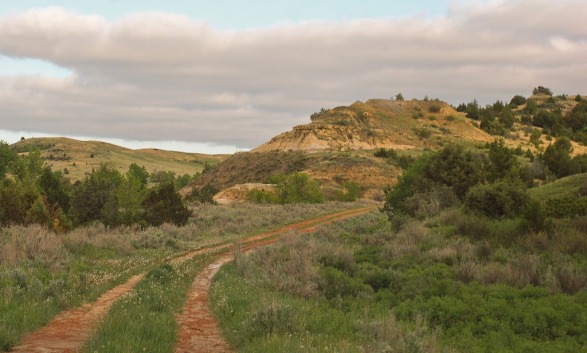
I wonder where that goes…is where great visual discoveries begin.
Parallel to that question is this postulate: “I wonder where that goes.” As you see a road heading over the hill don’t be afraid to check it out—with caution.
Take a short hike, or if you’re still driving and haven’t got out of your vehicle yet, take that two-track trail, but remember: it’s good to be in a reliable vehicle. There are no corner service stations out here. You need something to get over ruts and ridges and up and down the hills.
The point is this. Just because where you are standing at the moment doesn’t yield the shot you are looking for, don’t give up. Investigate the next curve, the next hill, the next trail. Be tenacious in your search for the shot you want.
Tip: Be curious.
Technique – do what you do best.
What is it in the scene that you want to shoot? Is it the buffalo on the trail, the Little Missouri River down below, the abandoned jalopy? Decide what is it in the scene that caught your eye, and crop out anything else that is distracting. Avoid visual distractions, zoom in on the subject.

Not all the intriguing shots are found on the trail. The next farm, the next small town may have a great shot. Zero in on what catches your eye, remove the background distractions.
It shouldn’t take a viewer of your photo more than an instant to determine what the photo is about.
Once you know what your photo is about, and are cropping out the distractions by zooming in on the subject, align the photo but don’t put it smack dab in the center of the photo. If you are shooting a landscape photo, don’t put the horizon right across the middle of the image. In fact, some time when you are out and about anywhere outside, notice how much of your view is sky. It’s often the majority if your view, it’s one way you can capture what you see — include the sky.

On the vertical line of a tic-tac-toe board, the prairie dog!
Whether it’s landscape you’re shooting, or anything else that catches your eye in the Badlands, remember the rule of thirds, and place your subject at or near one of the crosshairs of a tic-tac-toe board. Even if it’s a close-up of an image like the face of a horse, put the eyes on the third.
Tip: Don’t abandoned basic photo techniques
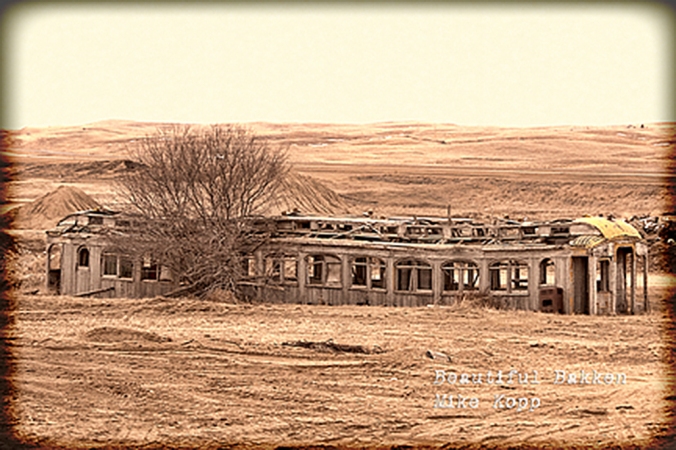
The abandoned rail car in this shot is on the lower horizontal line of a tic-tac-toe board. The horizon is on the top horizontal line. (rule of thirds.)
Like we said at the start of this article, the best times of the day to shoot the Badlands of Western North Dakota do not include mid-day. At all times, when shooting outside, adjust the sun in relation to your subject. The sun should be at your shoulder. Don’t shoot in to it, nor have it directly behind you. If you put it at your shoulder, you’ll get the contrast you need to show texture and variety in your subject.
In all cases, the best advice is to borrow from Nike’s saying, “just do it, just shoot it.”
Tip: Just shoot it.
There’s more to capturing the image than merely taking the photo. The bragging rights come from the adventure you took to get that shot. It bears repeating to your friends and family repeating the details of the work it took to get you to where you found that stellar shot. There are millions of vantage points in the North Dakota Badlands, got get on one and get your shot.

 Some will go cross-country skiing. Cross Ranch, a quiet state park where groomed cross-country ski trails weave through a cottonwood forest that stood here when Lewis and Clark tugged their boats up the Missouri River.
Some will go cross-country skiing. Cross Ranch, a quiet state park where groomed cross-country ski trails weave through a cottonwood forest that stood here when Lewis and Clark tugged their boats up the Missouri River.
 The wood stove sits quiet, unused and neglected much of the year. However, this time of the year, it’s actually a rewarding way to get out of the cold. I love burning wood to stay warm.
The wood stove sits quiet, unused and neglected much of the year. However, this time of the year, it’s actually a rewarding way to get out of the cold. I love burning wood to stay warm.






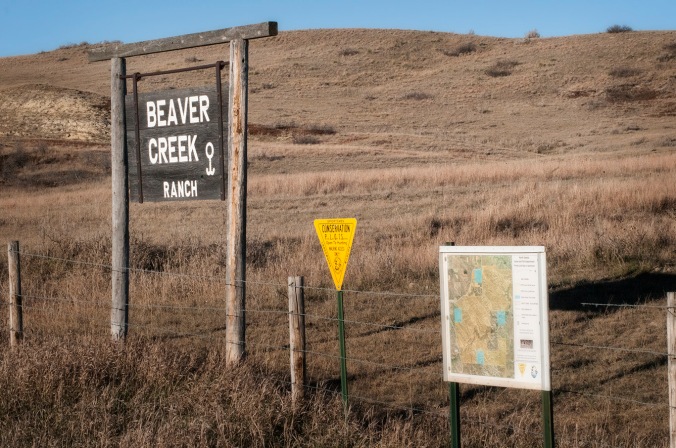








 The area also includes turkeys, coyotes and elk. There is evidence that an occasional mountain lion crosses the region.
The area also includes turkeys, coyotes and elk. There is evidence that an occasional mountain lion crosses the region.
























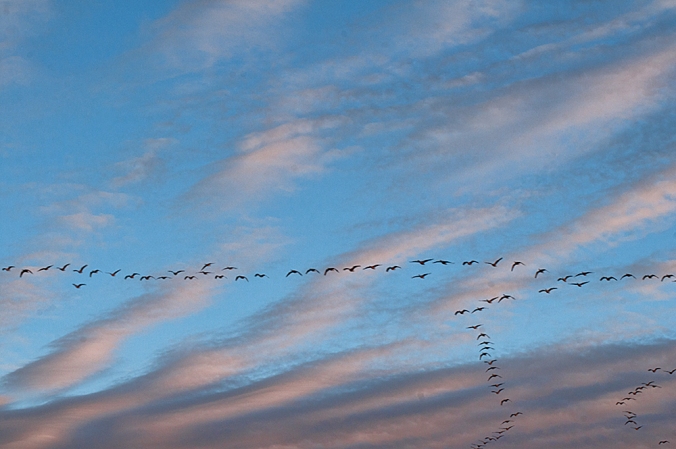
 The environment picks up that warm golden glow. Across the river the sun drops behind Oliver and Mercer Counties.
The environment picks up that warm golden glow. Across the river the sun drops behind Oliver and Mercer Counties.


















